STARR KING
San Francisco TEST PLOT/ November 2023
TERREMOTO SF
The Starr King Test Plot sits on a serpentinite hilltop in the Potrero Hill neighborhood of San Francisco. This site is part of an intermittant strip of serpentinite bedrock that stretches across the city to the northwest and ends in the Presidio (see purple blobs in the geologic map below. Starr King, a little patch of neighborhood open space, and meadows in the Presidio, are the only extant serpentine grasslands in the city.
Terremoto plans to investigate various weeding and seeding methodologies that can be applied to the rest of Starr King and to Terremoto projects. We hope to grow some starts from archival seed from the site. And we’ll be figuring out how to water as little as possible since there is no great access nearby.
But first, we will get to know the site through regular observations for a WHOLE YEAR. During this time our only intervention will be passive restoration through the careful removal of certified grade A weeds.
We just met, but we’re looking forward to developing a deep relationship with this land. We’re hoping that by slowing, listening, looking and being with, we’ll develop an ability to hear what the site is telling us it needs. This slow, relational approach is borrowed wisdom from our friends at The Cultural Conservancy which we picked up on our visit to their Heron Shadow project.
We’re also hoping to engage with local community through this TEST PLOT - Starr King regulars, volunteers from the Terremoto-verse, and new faces from the neighborhood.
Follow our observations by clicking on the Starr King tab at the footer.
San Francisco TEST PLOT/ November 2023
TERREMOTO SF
The Starr King Test Plot sits on a serpentinite hilltop in the Potrero Hill neighborhood of San Francisco. This site is part of an intermittant strip of serpentinite bedrock that stretches across the city to the northwest and ends in the Presidio (see purple blobs in the geologic map below. Starr King, a little patch of neighborhood open space, and meadows in the Presidio, are the only extant serpentine grasslands in the city.
Terremoto plans to investigate various weeding and seeding methodologies that can be applied to the rest of Starr King and to Terremoto projects. We hope to grow some starts from archival seed from the site. And we’ll be figuring out how to water as little as possible since there is no great access nearby.
But first, we will get to know the site through regular observations for a WHOLE YEAR. During this time our only intervention will be passive restoration through the careful removal of certified grade A weeds.
We just met, but we’re looking forward to developing a deep relationship with this land. We’re hoping that by slowing, listening, looking and being with, we’ll develop an ability to hear what the site is telling us it needs. This slow, relational approach is borrowed wisdom from our friends at The Cultural Conservancy which we picked up on our visit to their Heron Shadow project.
We’re also hoping to engage with local community through this TEST PLOT - Starr King regulars, volunteers from the Terremoto-verse, and new faces from the neighborhood.
Follow our observations by clicking on the Starr King tab at the footer.
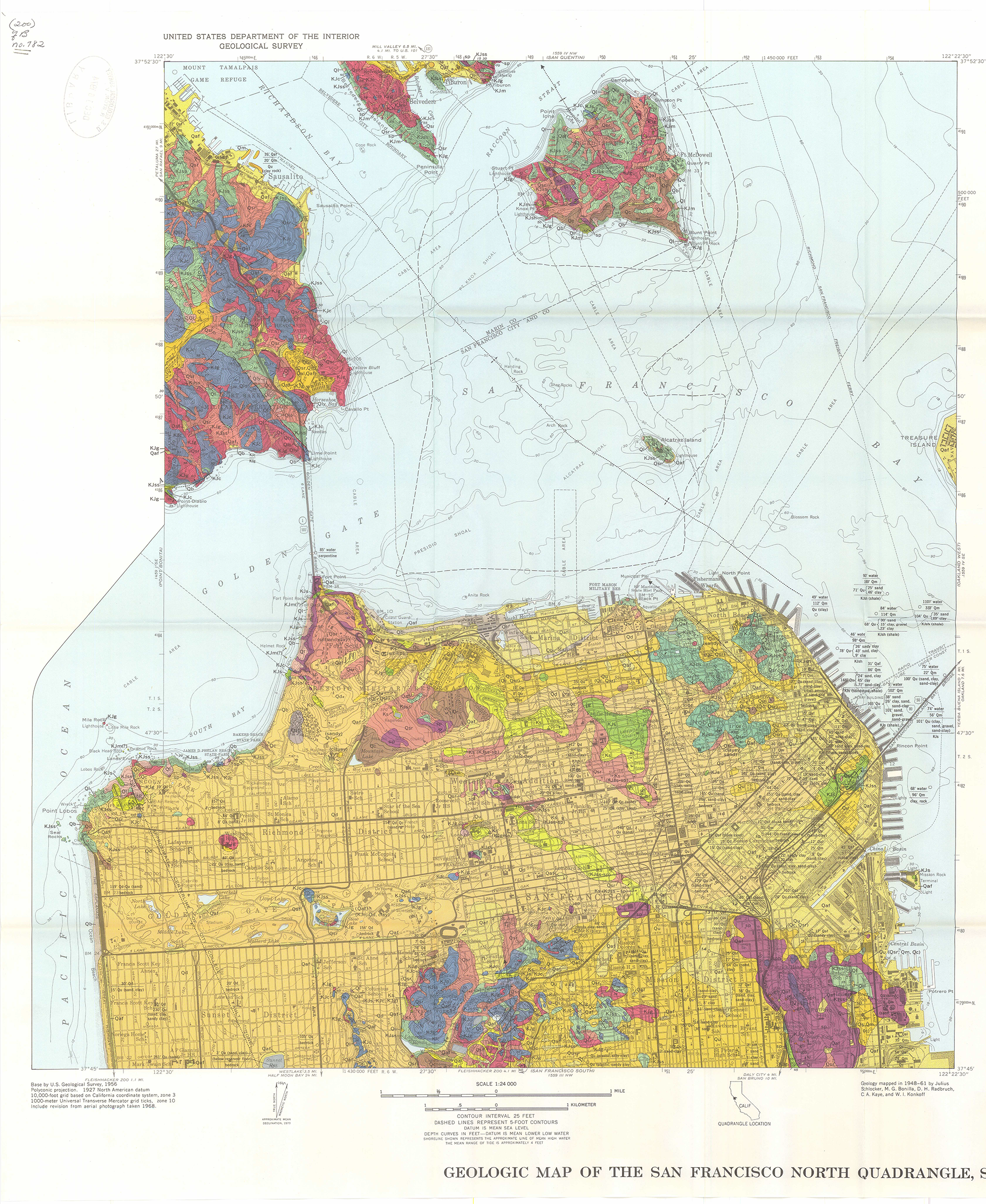
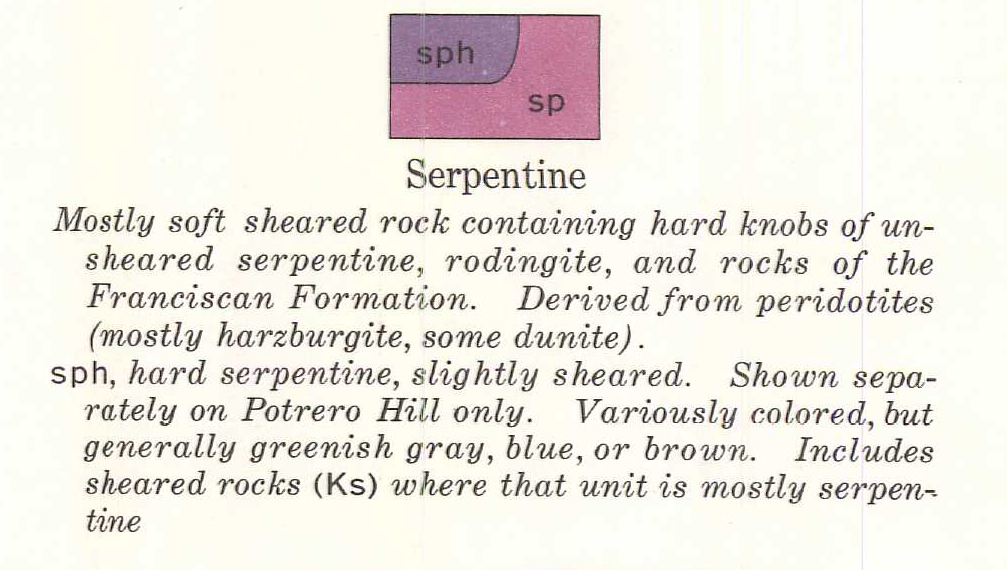

UNDER THE EUCALYPTUS
San Bruno Mountain Test Plot / November 2023
By Victoria Bevington
Test Plot and ULAP Fellow
This is the first time in a while I’ve been at the Test Plot alone. A nice moment to reflect on just the plants and myself, here in late fall in the middle of the hardest times for these new plantings. It’s good to see who is still here after making it through some lucky late winter rains and the typical dry summer.
I was there on the day these plants were put in (March 2023), and I often think back about how fortunate we were that it rained immediately the day after they went into the ground. As much as I want to report on how the activity of the human stewards of this piece of land has affected their survival, so much of it seems to be about fluctuating environmental factors which no one can control. If it had been a winter as thirsty as the previous year’s, how different would things look here?
Our intent when developing the Test Plot was to examine what plants would survive under the eucalyptus canopy, and what some rudimentary maintenance would do to help along their chances. There is no supplementary irrigation, no gopher cages although we’ve established a fence around the plot to keep out the aggressive San Bruno Mountain rabbit population.
Again, our variables are nullified by huge inhuman factors. The eucalypts around us have decided that everything is to be mulched by their leaf fall. The allelopathic qualities of these leaves as they decompose is something else we may want to monitor.
San Bruno Mountain Test Plot / November 2023
By Victoria Bevington
Test Plot and ULAP Fellow
This is the first time in a while I’ve been at the Test Plot alone. A nice moment to reflect on just the plants and myself, here in late fall in the middle of the hardest times for these new plantings. It’s good to see who is still here after making it through some lucky late winter rains and the typical dry summer.
I was there on the day these plants were put in (March 2023), and I often think back about how fortunate we were that it rained immediately the day after they went into the ground. As much as I want to report on how the activity of the human stewards of this piece of land has affected their survival, so much of it seems to be about fluctuating environmental factors which no one can control. If it had been a winter as thirsty as the previous year’s, how different would things look here?
Our intent when developing the Test Plot was to examine what plants would survive under the eucalyptus canopy, and what some rudimentary maintenance would do to help along their chances. There is no supplementary irrigation, no gopher cages although we’ve established a fence around the plot to keep out the aggressive San Bruno Mountain rabbit population.
Again, our variables are nullified by huge inhuman factors. The eucalypts around us have decided that everything is to be mulched by their leaf fall. The allelopathic qualities of these leaves as they decompose is something else we may want to monitor.

General
- Mulch vs nonmulch sections don’t make much of a difference - the overhead Eucalyptus have mulched them all
- A few common weeds returning: grasses, sow thistle, meadow vetch and weedy geraniums
- Blackberry sprouts everywhere; ones we flipped back along the fence are still alive. They are particularly prolific in freshwater seeps and marsh section; wettest region
Prairie + Grassland Section
- Some existing miners’ lettuce returning
- Phacelia californica doing great
- Clarkia rubicunda dead
- Gopher activity has done a lot of damage
Oak Woodlands
- Artemisia douglasiana doing particularly well
Freshwater Seeps + Marsh
- Cornus seneca vastly differing in sections, but I suspect the mulch vs nonmulch is not a factor
- Helenium puberulum + Symphotricum chilense doing well
- Gopher activity here as well
Coastal Sage Scrub
- Lovingly planted yarrow and Epilobium doing well




Community Activity
We’ve done so much this past summer and into the fall! In no particular order: work with Yoni Carnice and ULAP, a cultural collective centering the stories and work of Pinoy creators in and around the Bay, particularly around Daly City. We’ve done art and flower-arranging workshops with community elders, and a visit with a legendary Daly City artist, and have further plans for the winter. ULAP also just launched its new website, where you can find resources and records of our various projects.
We’ve done several interpretive events in and around the Test Plot, including a Red Elderberry hike and Eucalyptus Hike. Both walks were an exciting way to further explore the surrounding landscape through the lens of these two specific species. And, of course, we did a number of work days at the site that involved mulching, weeding, planting, and monitoring species composition and survivorship.
My own work involved interviewing members of my family and weaving what I learned with voices from the community. Earlier this year, we put out a community survey that, while asking practical questions about public familiarity and uses of the mountain, also collected more poetic answers to questions like “Why do you think Daly City is so foggy?
I created a zine that enfolds the answers into a written piece, mixed together with interviews I conducted with members of my family. I talked with my mom and my uncles, who themselves were second-generation immigrants, illustrated the difficult experience of growing up Asian-American in a Daly City that had not yet become the Pinoy Capital of the Bay Area. I also interviewed my brother, and with his experiences and mine, tried to briefly sketch a portrait of my family and its complicated diaspora.



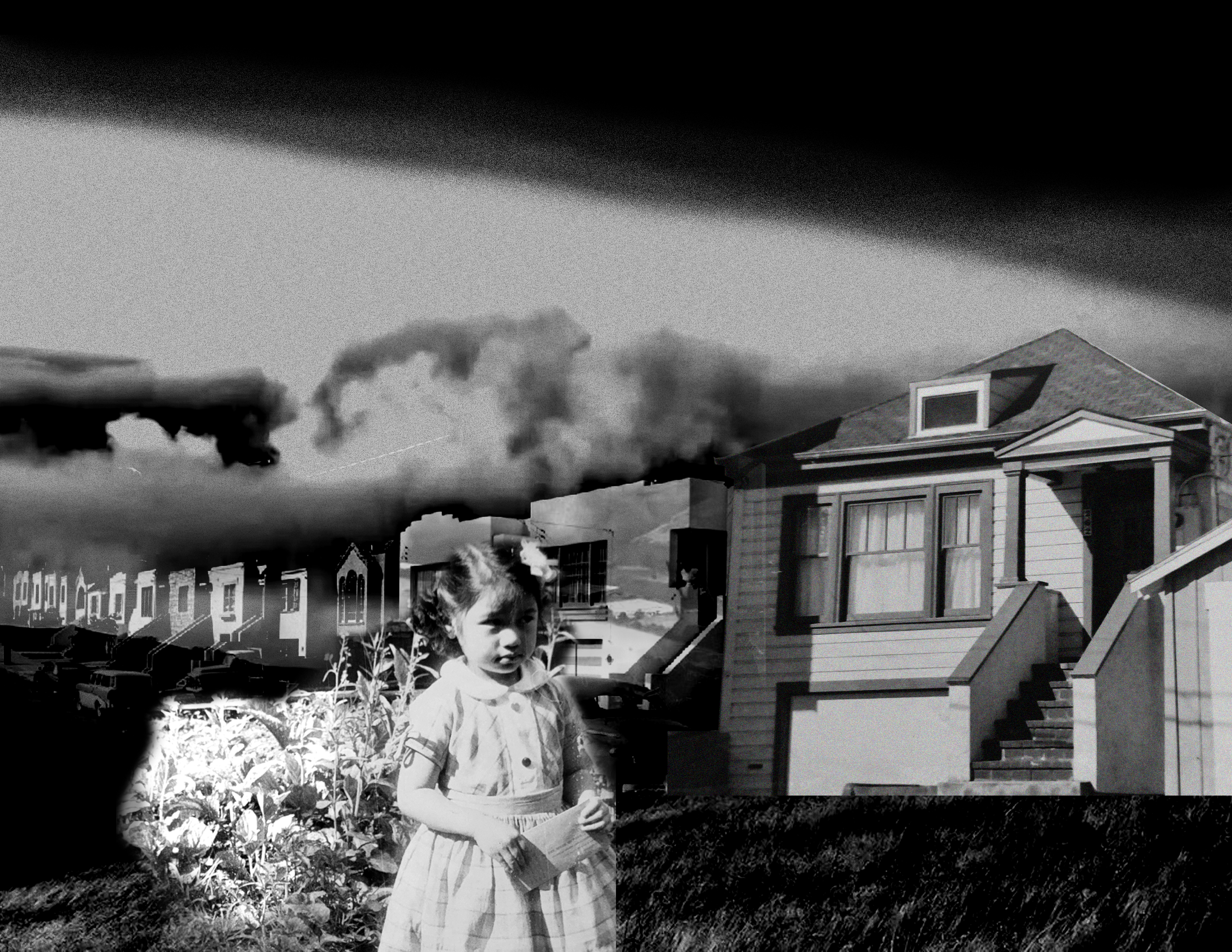




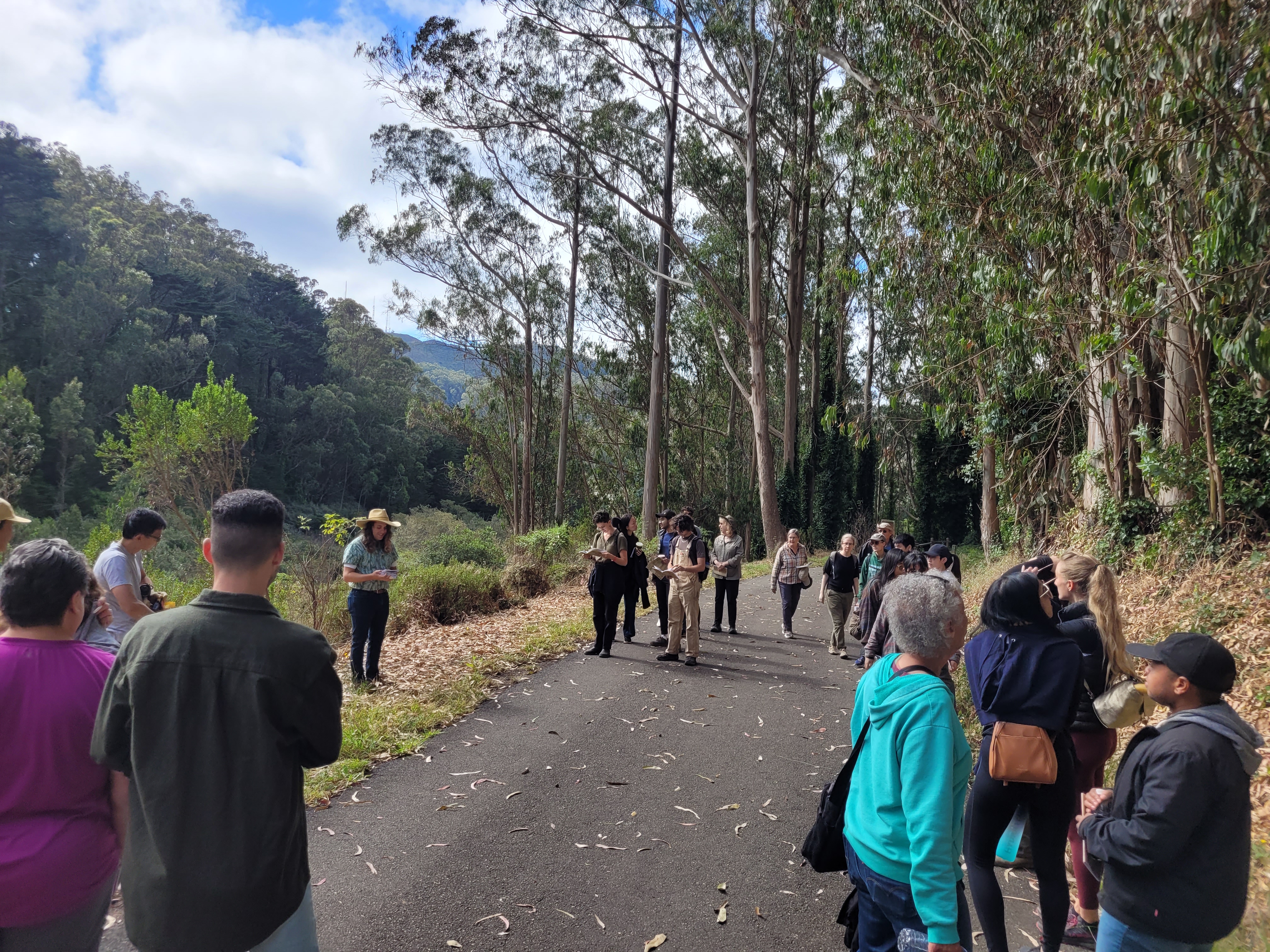
WATCHING WEATHER
Elephant Hill Test Plot / October 2023
Interview with Joey Farewell by Jen Toy
El Sereno neighbor
Jen: I wanted to create this post to share information with our Test Plot community about the wondrous topic of weather. Watching weather patterns and climate forecasting is both an art and science. It’s also increasingly necessary for the business we’re in, and a field that I want more people to understand given the weather extremes we’re all living through nowadays. To that end, please enjoy this conversation with Joey Farewell, a resident of El Sereno, conservation co-chair of Los Angeles CNPS, and unofficial Test Plot meteorologist.
PS. easy access to the links that Joey mentions:
WeatherWest Blog (check out the comments)
Tropial Tidbits (access to GFS model)
National Weather Service
Ambient Home Weather Station
Weather Underground (crowd sourced data from home stations)
Elephant Hill Test Plot / October 2023
Interview with Joey Farewell by Jen Toy
El Sereno neighbor
Jen: I wanted to create this post to share information with our Test Plot community about the wondrous topic of weather. Watching weather patterns and climate forecasting is both an art and science. It’s also increasingly necessary for the business we’re in, and a field that I want more people to understand given the weather extremes we’re all living through nowadays. To that end, please enjoy this conversation with Joey Farewell, a resident of El Sereno, conservation co-chair of Los Angeles CNPS, and unofficial Test Plot meteorologist.
PS. easy access to the links that Joey mentions:
WeatherWest Blog (check out the comments)
Tropial Tidbits (access to GFS model)
National Weather Service
Ambient Home Weather Station
Weather Underground (crowd sourced data from home stations)

Jen: Hey Joey, welcome and thanks for chatting today. How did you get interested in following weather?
Joey: Hi Jen! I’ve always really enjoyed the weather and its nexus with many of my favorite interests –– chasing powder for skiing & snowboarding, growing native plants, and learning about Californian habitat. I also grew up with a father who’s totally obsessed with weather, so meteorology was (and still is) my way to connect with him. Nothing gets my dad more fired up than a big snow cycle forecast for 5-7 days out in the Sierra Nevada –– and it’s really fun to share that excitement.
Also I’m a trusts & probate lawyer, and while I really enjoy estate planning work, meteorology makes for a fun side hobby.
Jen: I’ve heard you talk about how following weather makes you feel good...can you talk about that more?
Joey: Yea, accurate forecasting is kind of like having a superpower for the stuff I’m into. You ski better snow (because others foolishly made plans without following the data –– leaving more tracks of deep powder), you plant native plants at better moments (see: our impeccably timed Elephant Hill Test Plot installation, which was followed by 3” of rain just a day later, and our relaxed watering schedule), and you are just generally more connected with the natural world around you. Rain isn’t something that just happens to you that day; instead, you observed a process, maybe learned something along the way, and then perceive the phenomenon of water falling from the sky. It also gives one an illusory feeling of control in an otherwise indomitable universe. So that’s cool too.
Jen: Weather is kind of interesting because it connects global patterns with local experience. How do you think about scale when you are following weather trends?
Joey: That’s an interesting question. I would say that, when it comes to precipitation and snow in California, the storm door is (as we well know) closed more often than it’s open. Global patterns often conspire against us here, particularly in Southern California –– and that seems even more true in an era of climate change and “stuck” weather patterns. When that storm really opens, though, it’s both (generally) great for us and really problematic for other places that are far more accustomed to receiving rain and snow. Big precipitation years in California usually indicate some level of drought in the Pacific Northwest, fires in Australia (particularly during El Niño years), and below-average snow on the East Coast. When we’re scoring, the world often isn’t. That translates to forecasting, too –– when we see big high pressure building in the Hudson Bay region, for example, we can usually assume that the Northeast will get shut out and we can expect stormy low pressure out west. And when we see a pattern favoring cold temperatures and snow in New York, it’s usually time to put away the skis and break out the hose in the garden.


Jen: What is your favorite forecasting model? What is it useful for, and what are the limits?
Joey: Let’s put it this way –– all models are wrong, but taken in context, and in sum, they’re useful. Supercomputing, the internet, model aggregator websites such as Tropical Tidbits, weather blogs like WeatherWest, they all have made for what I consider the golden-age of home forecasting, but with that comes a myriad of ways to misuse that data and get humiliated in front of your friends and colleagues.
So here’s what I do. I generally use the USA-based GFS, not because it’s the best (that would be the ECMWF, the European model and gold-standard for forecasting) or because I’m particularly patriotic (our tax dollars at work, though!), but because it’s freely available, it’s generally pretty good out to 7 days, can spot things with some accuracy out to 10 days, and after that is, to put it kindly, useless. We call the post-12’ish day forecast “fantasyland” in model data, because it’s just too hard at the moment to forecast that far in advance with (1) our computing limits and (2) the inherent chaos of weather. It also “runs” (produces readable data) 4x a day, whereas the ECMWF only runs 2x a day (viewable around noon and then midnight), so the latter isn’t quite as good for a daily weather nerd routine.
For big cycles and events, it’s best to use multiple models –– so that’s when we are looking at the GFS, the ECMWF, and other models like the German IKON and Canadian CMC, all to try to find a consistent solution between them to best anticipate what is really going to happen. And then there are also short term models, like the NAM and HWRF, which are run at higher resolutions and can spot things (like isolated thunderstorm development or rain shadowing –– which is when topographical features such as mountains “catch” the moisture from rain-bearing clouds and deny it to the areas behind them –– where certain areas might get skunked) that the lower resolution models can’t. There’s also the ensemble models, which is when the GFS, the ECMWF, and others, are run multiple times and then averaged together in a super-model of sorts –– but that data is more available to the pros than the lay forecaster.
And what’s critical is to corroborate model findings with other users, too. The internet makes this more possible than ever (though I’ve got to shout-out a few weather nerds of mine in real life, where “lol dude the 18Z GFS is totally bonkers” is a real thing that we text each other), where we can connect with other model-riders (yes, that’s a real thing) on fabulous online weather forums like WeatherWest. On the comment board for each post (follow the activity on the most recent post for up-to-date analysis), you’ll find general chatter about current conditions, model data, storm prognostications (and post-mortems), banter, and –– my personal favorite –– the absolute hazing of folks who call “bust” on a storm far too early, before any meaningful precipitation or effects were forecasted to begin in the first place. These folks aren’t professionals, but they’re close. And oftentimes these users are the first to spot long-range patterns and atmospheric perturbations that result in that thing we all love: storms.
And speaking of pros –– I’ve absolutely got to mention that the National Weather Service is an invaluable resource for both confirming your own read of the data, but also illuminating many other things you will invariably miss in your forecasting. They present their accessible info through social media, but the good stuff is in their AFDs –– called “Area Forecast Discussions.” These discussions (updated 2 to 3 times daily) contain thorough, high-level analysis of both short and medium term forecast windows. They usually don’t go out past that time-frame (see the above community WeatherWest for proper fantasyland chatter) but are seriously invaluable for learning to understand this stuff. And again, National Weather Products reflect our tax dollars at work! In a world of complicated, slow government –– I love reading and learning from the professionals at the National Weather Service. It’s public work at its best.


Jen: What kind of weather station do you have at your house?
Joey: I really like our Ambient Weather station. You could pay more for a Davis, etc, but these work great, are user-friendly, and connect well with Weather Underground and a range of data supporting apps.
Jen: Couple more questions. You’ve said that this has been “the best year ever” for habitat restoration plantings –– can you tell us why that is?
Joey: Oh man, the 2022-2023 planting year! Wet season for the ages. Deserving of a treasure trove of superlatives (I’ve written too much already –– so I’ll spare you). We had a strong storm in early November (2-3”), a couple smaller fronts that kept things moist and happy through early December –– at which point a series of atmospheric rivers took aim at California and just unloaded consistent, cold storms through late March, early April. We had one “long” break from precipitation, like 12 days in late January and early Feb, and then it was game on again. Then, as if all that rain wasn’t enough (but at 38” in El Sereno, it definitely was), May was downright cold and cloudy, June went full gloom, July wasn’t that bad, and in August –– it rained like (almost) never before during a SoCal summer! 4” in El Sereno (bringing our season total up to 42” incredible inches for the wet season ending September 30), 6” in Glendale, just all totally bonkers. After all that, the weather gods delivered perhaps the most unexpected coup-de-grace: September was nice and cool for once! I think we watered the Elephant Hill Test Plot like 6 times all year. Unbelievable.
Jen: Finally, any thoughts on this coming year and the predicted El Niño?
Joey: I’ve got a few thoughts! More likely than not that we get above-average precipitation in SoCal –– which is a big deal in California, where we are more likely to have a dry year than a wet one –– as strong El Niños are as sure a bet as you’ll find for wet season forecasting. In fact, it’s really only strong Niños that move the needle in that regard for CA, and we certainly can get wet years without them (last year was a La Niña).
Indeed, on one hand, things look good. A strong El Niño (particularly an east-based one, as we have now) should theoretically amplify the southerly jet stream into Southern and Central California, propping the storm door open for mid-latitude cyclones to provide the ultra rare back-to-back wet years for LA.
But in an era of climate change and rapidly warming oceans, things seem less predictable than usual. Because El Niños operate via an oceanic-atmospheric relationship that relies fundamentally on ocean temperature anomalies –– in layperson terms, a bunch of warm water in a certain place (certain zones of the equatorial Pacific) that are markedly warmer than areas around them –– they may be less impactful when the entire Northern Pacific is basically on fire. The temperature gradient might be there for strong Niño effects (ie, a strong southern jet stream), but what if the overall oceanic temperatures in the mid and northern latitudes are warm enough to disturb that effect? That’s what some folks smarter than me think happened in 2015-2016, the last strong El Niño (which, outside of a riveting week in early January, was a total bust for SoCal storms).
So yeah! Looks good, but I wouldn’t be surprised if we go dry, perhaps owing to the extraordinary warmth above, or for another fly in the ointment yet to be discovered. But that’s part of the fun, isn’t it?
(OK well, not the global warming thing)
Jen: Thank you for sharing your knowledge with our Test Plot community. Next time, let’s talk more about local weather and microclimates.

SUMMER FIELD MOMENTS
Debs Test Plot / July 2023
By Hannah Pae
Debs Volunteer, Terremoto designer
The atypical amount of rain this spring has resulted in some exciting lush growth as the soil underfoot gladly absorbs the extra moisture. The cool and dusky scent of CA sagebrush surrounds us as we pull milk snails off the stems and leaves of purple lupines that pop up amongst the salvias. On other days, we carefully free sprawling coyote brush and monkeyflower that have happily outgrown their protective gopher baskets. A desert centipede wriggles itself deep into bark mulch while wild cucumber drops its spiky lime green fruit and winds its tendrils through a bank of deep green toyon. The peaks of the San Gabriel Mountains are laden with snow in March when the Encelia flanking the trail up to the test plot starts to let out the first of its yellow flowers. By July, the snow has melted and the Encelia is in full ecstatic bloom.
The following is a series of field observations, memories, and moments collected from the past few months while volunteering at Debs Test Plot.
Debs Test Plot / July 2023
By Hannah Pae
Debs Volunteer, Terremoto designer
The atypical amount of rain this spring has resulted in some exciting lush growth as the soil underfoot gladly absorbs the extra moisture. The cool and dusky scent of CA sagebrush surrounds us as we pull milk snails off the stems and leaves of purple lupines that pop up amongst the salvias. On other days, we carefully free sprawling coyote brush and monkeyflower that have happily outgrown their protective gopher baskets. A desert centipede wriggles itself deep into bark mulch while wild cucumber drops its spiky lime green fruit and winds its tendrils through a bank of deep green toyon. The peaks of the San Gabriel Mountains are laden with snow in March when the Encelia flanking the trail up to the test plot starts to let out the first of its yellow flowers. By July, the snow has melted and the Encelia is in full ecstatic bloom.
The following is a series of field observations, memories, and moments collected from the past few months while volunteering at Debs Test Plot.
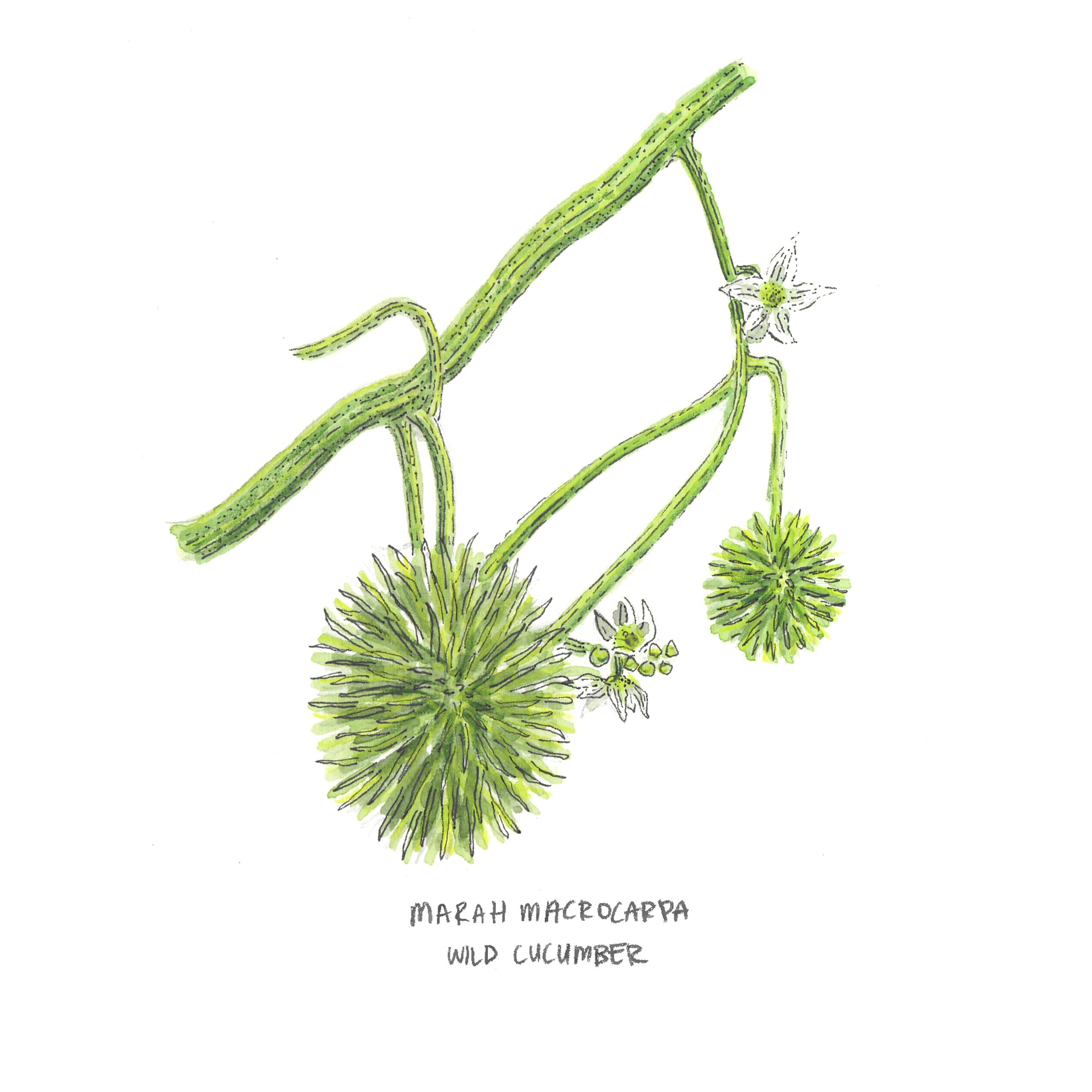



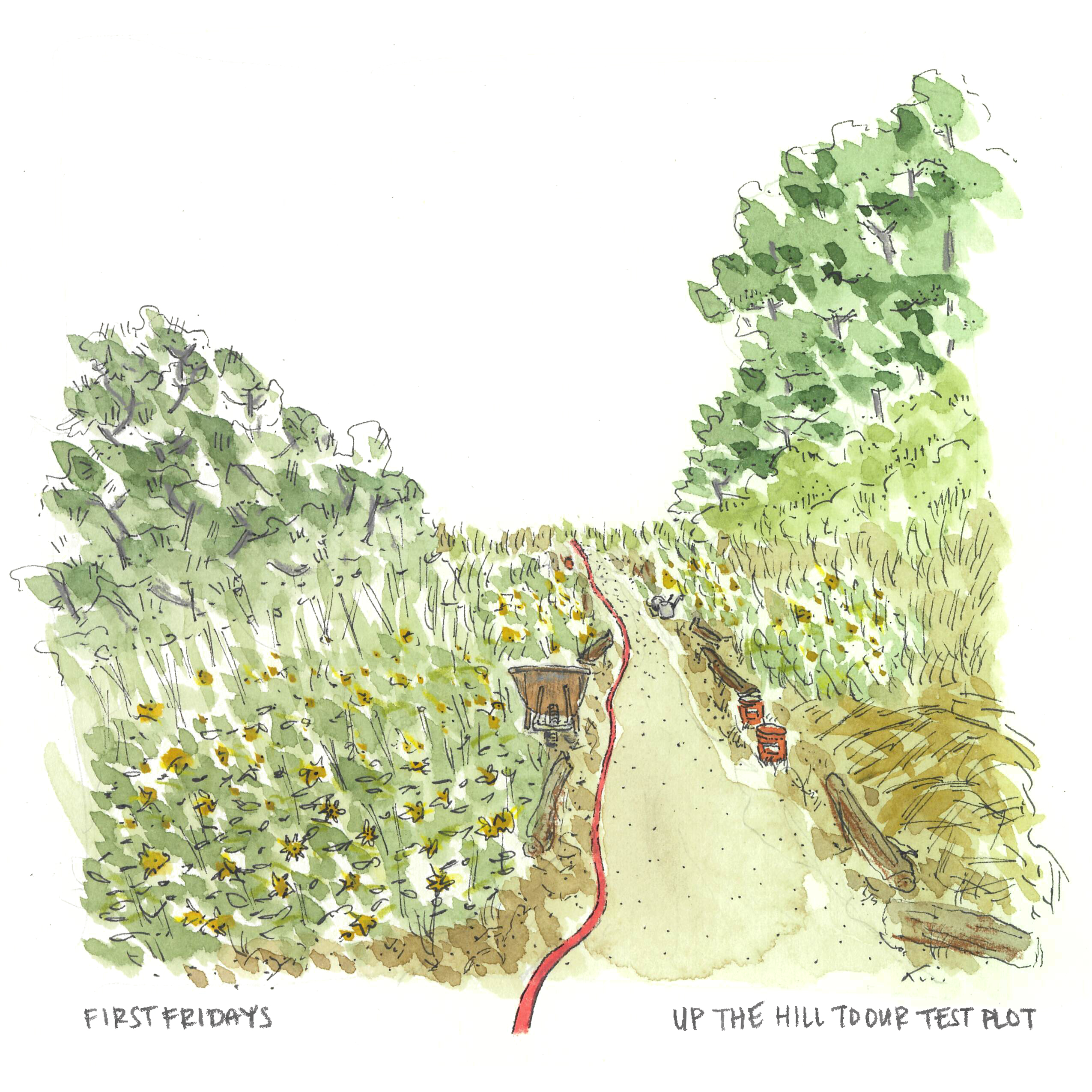
IT’S RAINING OAKS, AND OTHER UPDATES
Elephant Hill Test Plot / June 08 2023
By Joey Farewell
El Sereno neighbor
To cut to the punchline, the plots are thriving! The gods blessed us with one of the wettest winters in the past 30 years, with local gauges showing between 36-38” of total rainfall at the bottom and top of the hill, respectively. As the designated Test Plot Meteorologist, I (Joey) connected with staff at the Los Angeles County Department of Public Works, which provided official precipitation data going back to the 1996/1997 season for their nearby rain station in Alhambra. According to their data, this year of years beat all but one wet season (the vaunted 2004-2005 winter), with a total of 36” of precipitation at the Alhambra gauge since October. Incredible! Read on below...
Elephant Hill Test Plot / June 08 2023
By Joey Farewell
El Sereno neighbor
To cut to the punchline, the plots are thriving! The gods blessed us with one of the wettest winters in the past 30 years, with local gauges showing between 36-38” of total rainfall at the bottom and top of the hill, respectively. As the designated Test Plot Meteorologist, I (Joey) connected with staff at the Los Angeles County Department of Public Works, which provided official precipitation data going back to the 1996/1997 season for their nearby rain station in Alhambra. According to their data, this year of years beat all but one wet season (the vaunted 2004-2005 winter), with a total of 36” of precipitation at the Alhambra gauge since October. Incredible! Read on below...

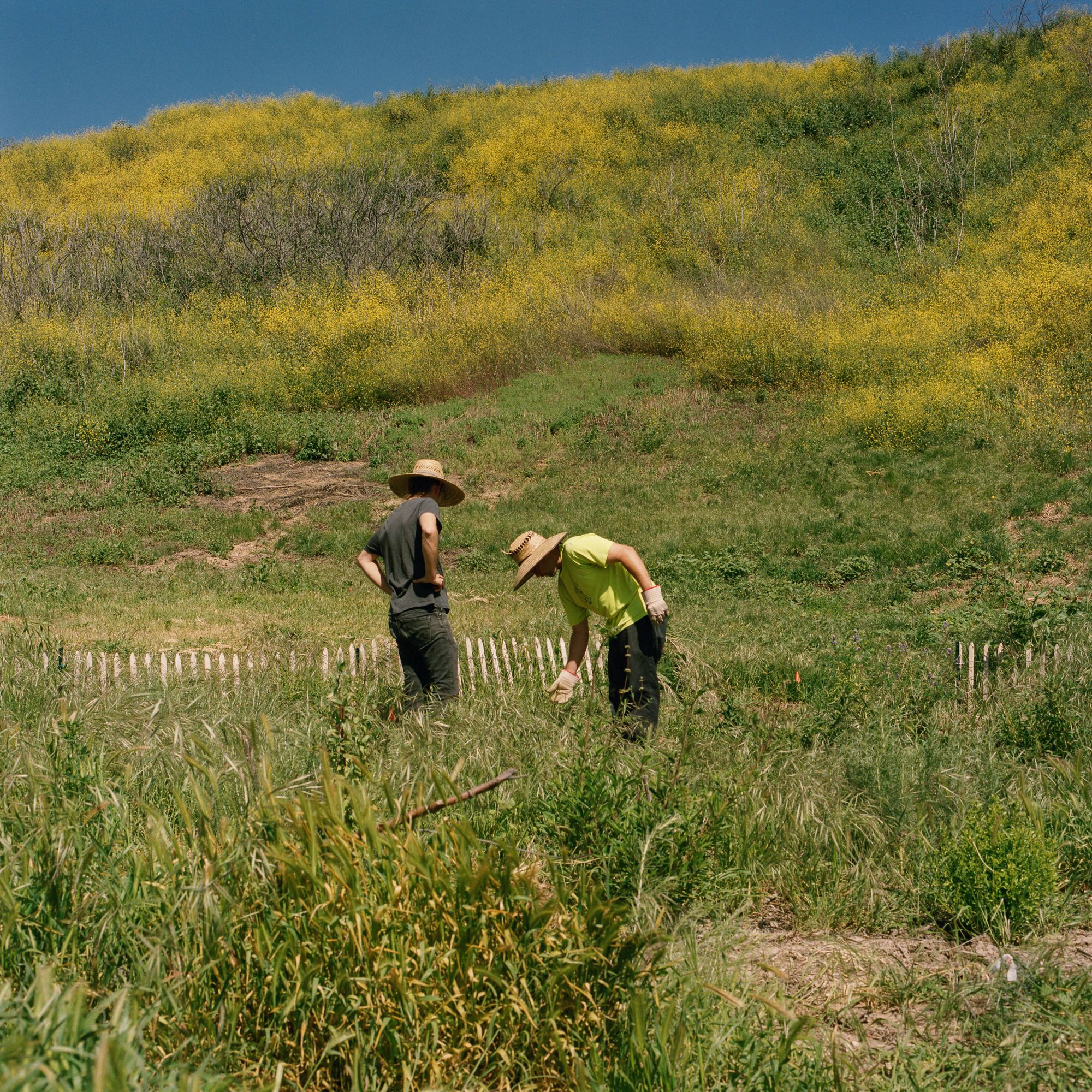
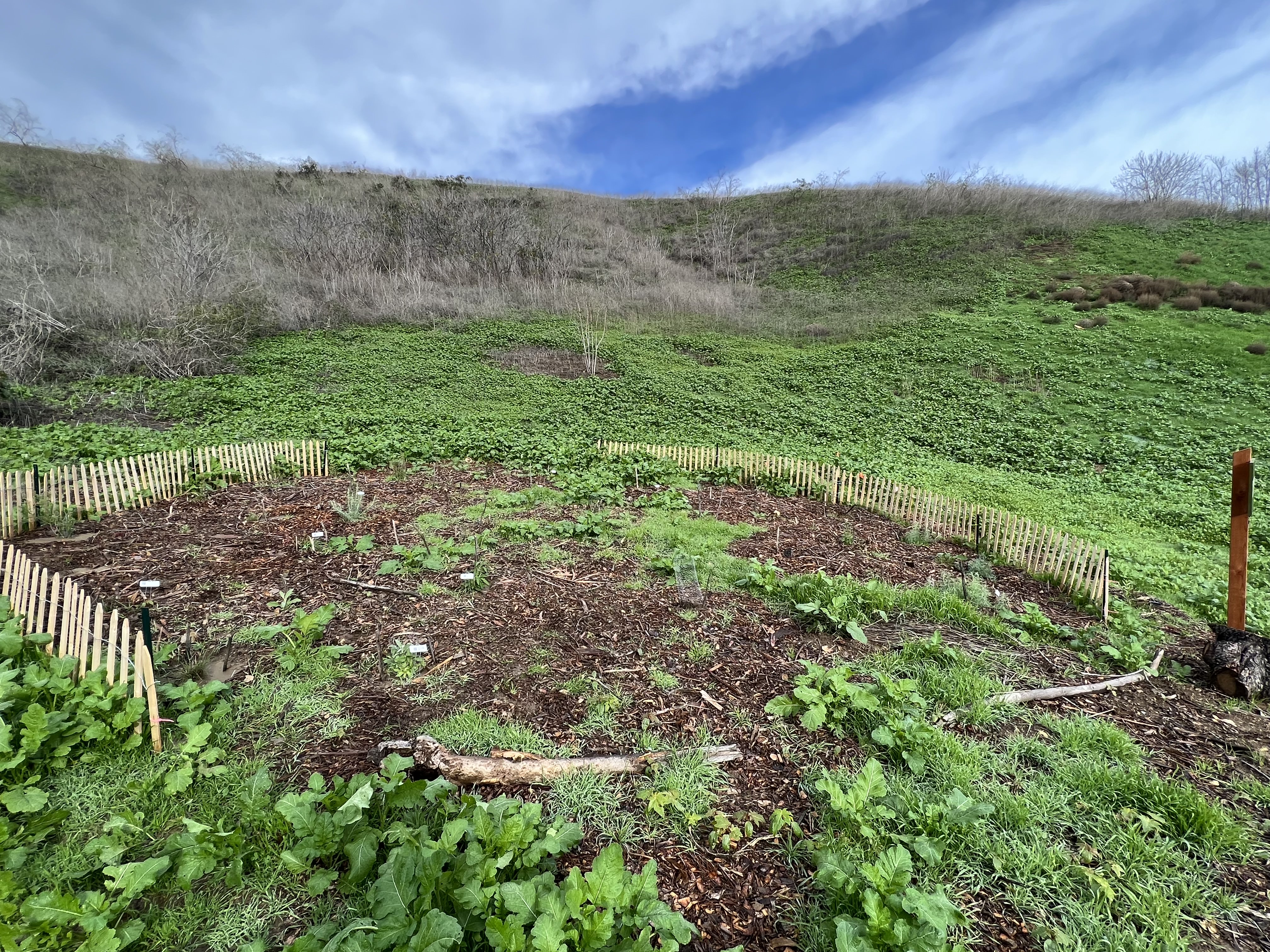
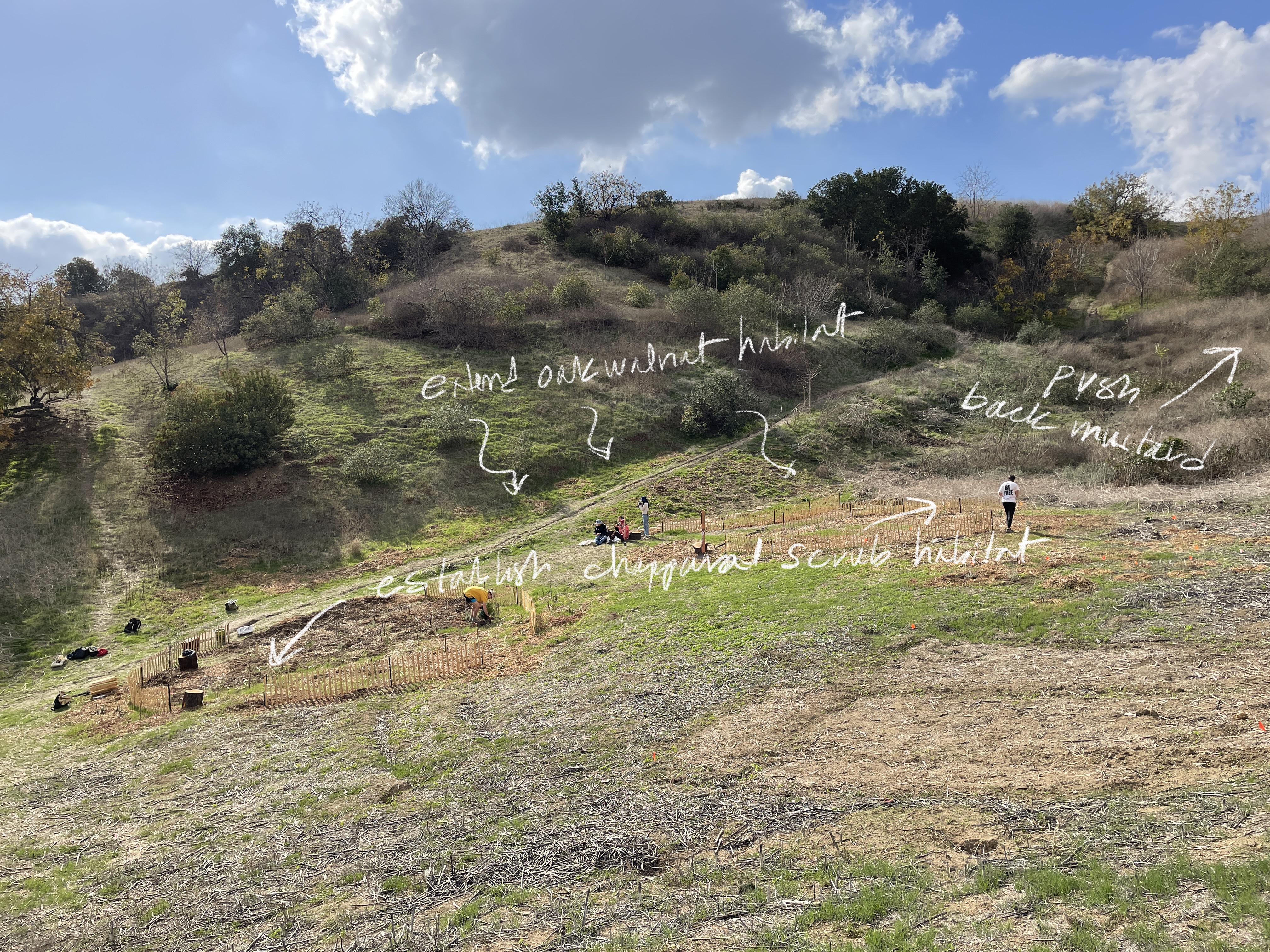

What has this meant for our local El Sereno Test Plot? Mostly good things! If you recall, we installed over 200 native plants back in November 2022. Below is the complete plant list we planted in November, mainly sourced from North East Trees as well as donations from TreePeople, a few neighbors, and wildflower seed from California Native Plant Society.
We’ve seen deep establishment of many of our native chaparral and scrub plants, including black sage, white sage, sagebrush, fuschia, and monkeyflower. Remarkably, we have not had to water these plants at all. This is because we had a powerful storm drop over 2” immediately after planting in November, which was then followed by consistent, regular rainfall and cold temperatures all the way through April. Since then, we have seen below-average temperatures, heavy fog, and occasional drizzle. The result is a stunningly efficient establishment of our chaparral plants –– they are already deeply rooted, large in size, and show no signs of drought stress. Conversely, the only species we’ve had issues with thus far is California buckwheat. Generally, Eriogonum species are quick to establish and grow in loamy California soils, but we hypothesize that the combination of clay soils at the Test Plot site and extreme rains have stunted the growth of the buckwheat, leaving them dormant (at best) and yellow and sickly (at worst). Time will tell how the buckwheats react to the summer heat, but we are optimistic that they will rally once the soil fully dries out and the roots are able to breathe a little easier.
Our slate of trees is also thriving, even in unexpected ways. We planted a variety of one gallon native oaks, black walnuts, and larger tree-like shrubs like Elderberry and Lemonadeberry. All are doing really well and showing few signs of stress, if any.
And speaking of oaks and walnuts, with the consistent wetting rains and cold air, the many acorns and walnuts we direct-seeded into the north facing slope are germinating en masse! They started sprouting in January, and since then we’ve counted dozens upon dozens of Quercus agrifolia (Coast Live Oak / Whet) and Juglans californica (Southern California Black Walnut / Takaape' Waashut) both within the plots and on our north-facing slopes. These acorns and walnuts will set deep taproots that may give them a superior chance of drought resistance and longevity, especially in an era of climate change, compared to those we planted from containers.
The only problem with this many baby trees coming up has been flagging them for watering and protection –– but thankfully, that’s where the kids from El Rio Elementary School in Lincoln Heights came to the rescue. We recently held a school hike and oak-marking activity at Elephant Hill, where the kids used bright orange flags to locate and mark the many oak seedlings coming up all over the Test Plot. To give you an idea of how just how many oaks are coming up, we actually ran out of flags (and there were at least 25 left in that bag…).
Moving forward, while there is a now a robust presence in the Test Plot basin itself in our little valley at Elephant Hill, growing in tandem with a community of Black walnuts and oaks, coffeeberry, poison oak and monkeyflower on the adjoining north facing slope, the upper flat and southeastern bowl areas have been largely dominated by mustard, european grasses, and castor bean.
We hope that our early fast adapters will get established and start creating mycorrhizal relationships that better support a coastal scrub and woodland ecosystem and allow native habitat to compete better with the invasives surrounding the plot. In truth, this is already happening –– oaks and walnuts (and even Western Vervain, a riparian plant) are volunteering in places that were dominated by mustard this time last year. Where there was once a stand of impenetrable mustard, we’ve already got baby trees in our baby Test Plot. Hard to imagine a better first year at the Hill.
As for next year? We hope to plant more wildflowers (inspired by the Elysian Park Test Plot Superbloom) and native plants (especially grasses) in the fall to take advantage of the nascent El Niño brewing in the Pacific Ocean, which generally (but not always) portends above-average precipitation in Southern California. In fact, many of the wettest winters in Southern California history are associated with El Niños –– but you’ll have to read our Test Plot Weather Update coming soon for more on that!
Other Assorted Stuff
Another update we have is about MOWING. Each year in May-June, LA City, which owns the parcels of land around the Test Plot (on MRCA land), hires a contractor to mow the grasses and mustard for fuel reduction. We were pleased to see that they mowed around the fences, respecting our marked plantings and even protecting pockets of poppies and other natives. Hopefully, each year the area they need to mow will shrink.
Planting Strategy
We planted four areas:
1) walnut and oak acorns and some 1 gallons along the north facing slope down to the toe of the slope where it drops into the east-facing basin – as mentioned above, these lil guys are taking off.
2) in the basin, coastal sage scrub plants in an upper plot that is largely flat – this plot was sheet mulched with cardboard. Initially these plants as a general rule, did not grow as rapidly as the lower plot, though they are the same species mix.
3) a bit further down/east, a lower plot with a stronger eastern aspect
4) along the edges – coyote brush, mulefat, laurel sumac and other tough shrubs that will hopefully hold their own against the mow edges.
Plant List (November 2022)
| Juglans californica | SOCAL BLACK WALNUT |
| Quercus agrifolia | COAST LIVE OAK |
| Quercus berberidifolia | SCRUB OAK |
| Quercus lobata | VALLEY OAK |
| Umbellularia californica | BAY LAUREL |
| Acmispon glaber | DEERWEED |
| Artemisia calfornica | CALIFORNIA SAGEBRUSH |
| Asclepias fascicularis/Stipa pulchra combos | NARROW LEAF MILKWEED |
| Baccharis pilularis | COYOTE BRUSH |
| Baccharis salicifolia | MULEFAT |
| Diaplacus longiflorus | STICKY MONKEYFLOWER |
| Epilobium canum | CA FUSCHIA |
| Eriogonum fasciculatum | CA BUCKWHEAT |
| Frangula californica | COFFEEBERRY |
| Hesperoyucca whipplei | CHAPARRAL YUCCA |
| Lupinus longifolius | LONG LEAF BUSH LUPINE |
| Malosma laurina | LAUREL SUMAC |
| Rhamnus ilicifolia | HOLLYLEAF REDBERRY |
| Rhus integrifolia | LEMONADE BERRY |
| Salvia apiana | WHITE SAGE |
| Salvia mellifera | BLACK SAGE |
| Salvia spathacea | HUMMINGBIRD SAGE |
| Sphaeralcea ambigua | APRICOT MALLOW |
